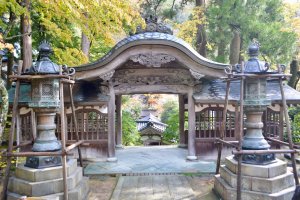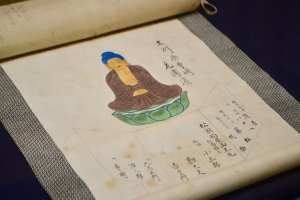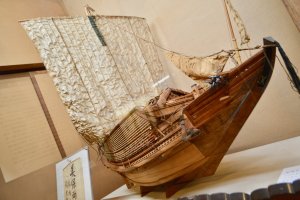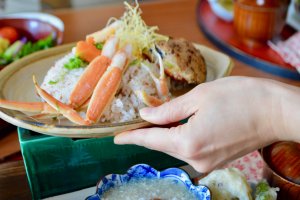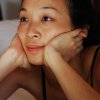The newly developed Hokuriku Shinkansen has opened up Kanazawa—Japan’s capital of artisanal kogei crafts—to a whole new generation. But the rich culture of the areas beyond, in Echizen and Kaga, have thus far eluded all but the most inquisitive travelers.
The direct train northwest from Tokyo up to Kanazawa may reward visitors with an encounter of a refined version of the surrounding Hokuriku region’s culture, but to really understand where that culture came from you have to pursue the striking nature and refined way of life that gave way to it. Put simply, while Kanazawa may be the place where the exquisite Kutani-ware ceramics find their way to the dinner table, Echizen-Kaga is where they are crafted.
Fortunately, the Shinkansen route is set to be extended through the Echizen-Kaga region in the coming years. But if you want to stay ahead of the pending crowds, there has never been a better time to discover the untapped potential of the area. That said, transportation options from Kanazawa to Echizen-Kaga are already excellent. The Limited Express line whisks you into the heart of the action in less than 30 minutes; and if you are coming to Hokuriku from Nagoya or Osaka, you have the option of seeing Echizen-Kaga before Kanazawa, which, if anything, is probably the best way to track Hokuriku culture from inception to the peak.
Whatever route you take to Echizen-Kaga, there is enough public transport from the main hubs to see you on your way. You only need a car if you want to tick off some of the more obscure sights. Our journey will take in the key locations of craft, culture, and spiritual tradition that comprise the quintessential Echizen-Kaga experience.
Kitamaebune Ship Museum

Coming west from Kanazawa, your first port of call ought to be the Kitamaebune Ship Museum. The charming mansion was a hub for the merchants of trading vessels that sailed clockwise from the port of Osaka, around the coast of central Honshu, all the way to the northern island of Hokkaido during the second part of the Edo Period (1603–1867). Kaga became the home of many sailors and merchants who undertook this treacherous, yet lucrative, journey that saw the crafts of the area spread across the country. The vast building tells the story of this romantic era of sea travel. Even the gray planks of the mansion’s exterior were repurposed from a retired Kitamaebune ship.

Encapsulating the blend of craft, culture, and spirituality that Echizen-Kaga is known for is the museum’s collection of portable Buddhist shrines, known as butsudan. These are a culmination of the region’s lacquerware and gold-leaf work, rich Buddhist history, and important place on shipping routes—given that these shrines would be taken out to sea on the Kitamaebune to protect the crew and precious cargo.

Kaga Crab Cuisine

To the present day, one of Echizen-Kaga’s most popular exports is its delicious crabs, which are graded in quality in a similar manner to Japanese wagyu beef. Of course, when it comes to seafood, freshness is key. So, for peak crab cuisine, there is nothing quite like indulging yourself in Kaga. No fewer than five of Kaga’s fine Japanese washoku cuisine restaurants have taken it upon themselves to offer a full Kaga crab lunch for ¥2,250 (tax included)—all served on the area’s historic Kutani-ware tableware.

One of those restaurants is Bantei, just a short walk from JR Daishoji Station. This was our destination for crab from the local Sea of Japan waters. You actually cook the crab right at the table to ensure that the flavors are captured at their absolute freshest and the meal is filled with plenty of references to our crustacean friends to keep all your senses amused!

Yamanaka and Yamashiro Onsen

A short detour into the hills near JR Kaga Onsen Station leads to the hot spring resorts of Yamashiro and Yamanaka Onsen. Of course, the stars of the show are the historic resorts—most of which are in the late Edo-style most frequently encountered in Japan—but there are also excellent examples of architecture from the Meiji period (1868–1912). Most notable is the Yamashiro Onsen Ko-Soyu, where you can bathe against the backdrop of stained glass.
Over in Yamanaka, the local Yamanaka lacquerware takes center stage. It decorates much of the local Yamanakaza theater and features in the many craft shops. The impossibly thin wooden base and durable lacquer find itself in surprisingly modern forms that you can fit into your daily life.
Tojinbo Cliffs
If you want to see where our crab is caught, the Tojinbo Cliffs are no doubt the best vantage point from which to look out over the Sea of Japan. The craggy cliff face takes its name from a corrupt monk who, it is said, was thrown into the waters by his followers once his deceit was revealed. Legend has it that his vengeful spirit worked the rocks into their current twisted form. The cliffs and panoramic views across the waters to Oshima Island and shrine are a delight, as is the quaint seaside village surrounding the cliffs.
Awara Onsen
Given the expanse of the Echizen-Kaga area, you will need a place to stay for at least one night as you travel. The aforementioned hot springs centering on JR Kaga Onsen are one option, with the alternative being JR Awara Onsen, known nationally for its abundance of source springs—74 in all. What this means, in real terms, is that almost every inn has its own unique water qualities that make each worth a visit. While there is a wealth of waters, there is a relative absence of sulfur—a plus for those who struggle with the scent.
Haiya is one of the area’s more up-scale inns with a wealth of room options, offering a luxurious Japanese experience in parallel to a Western one. Rooms with beds as well as traditional Japanese futon are available, as are those with private baths for guests who don’t want to brave the communal ones. This also solves the tattoo issue rather succinctly.
The overall experience, replete with monstrous Echizen crabs, presents a different version of luxury—one honed by Japanese sensibilities. With rooms featuring views over koi ponds and private, steaming, mineral-rich baths, there are few who will not want to sign up for the Japanese resort experience.
Maruoka Castle
Back on the road, our next stop is Maruoka Castle, home to one of only twelve watchtowers left in Japan. The gargoyles and demon-faced ridge-end tiles that adorn the well-proportioned structure are an impressive sight—all the more impressive once you realize they are carved from local stone as opposed to pottery.
Eiheiji Temple
Deeper into the mountains—and further into the Echizen part of Echizen-Kaga—we find Zen-no-Sato (Zen Village). This hub of Buddhist culture, including shojin ryori Buddhist cuisine, centers on the stunning Eiheiji Temple.
This is one of the few active Zen monasteries in Japan that you can actually visit. It is impossible not to be moved by the sheer grace of the buildings, the natural environs, and the many monks going about their devotions. While some historic temples can feel like a lifeless art gallery or museum, at Eiheiji Temple you can feel what a living one is really like. The monks cleaning the halls are as much a part of the temple as the serene Buddhist statues that watch over them.
You can experience Zen and the Buddhist way of life for yourself at the nearby Hakujukan Hotel. This includes lodging, meditation, and copying sutras—all in a luxurious yet contemplative setting.

Hakusan-Heisenji Temple
Finally, we head east into Katsuyama City—home to Hakusan-Heisenji Shrine. This moss-encrusted landscape, where the wooden shrine buildings look soon to be consumed by the nature that surrounds them, was originally a shrine to the mountain gods in what is now called Shinto tradition. The shrine became a temple due to the influence of Buddhism in the area in the Heian period (794–1185), only to revert to a shrine in 1870 when the Japanese government ruled that Shinto and Buddhism ought to be separated.
This rich history plays out in the buildings of the shrine, its rare style of torii gates, and expansive grounds. Countless groves for meditative moments await those who make it this far into deepest Echizen.
However you make your Echizen-Kaga pilgrimage, you are sure to be rewarded with insight into how nature led to spiritual tradition—which in turn led to craft—and then formed the very backdrop to the Japanese way of life.
Resources
Echizen-Kaga Tourism Information English Homepage
https://echizenkaga.jp/?lang=en
Area Access Map
https://echizenkaga.jp/access/?lang=en



















